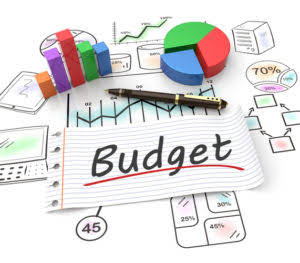Content

Companies structured as master limited partnerships and real estate investment trusts are also top dividend payers because their designations require specified distributions to shareholders. Many companies do not pay dividends and instead retain earnings to be invested back into the company. Due to the requirements of Swiss corporate law described above, only after the annual financial statements for the year Y-1 have been submitted can an effective dividend resolution for the year Y-1 be passed. The IFRIC received a request for guidance on the recognition as revenue of a dividend in the financial statements of an investor when the dividend is in the form of the investee’s own equity instruments. Although final and interim dividends are both paid to the investors as a return on their investment, they have some key differences. So let us look at the differences between the final vs. interim dividend. If the Company has not made any profits in a financial year, it may choose not to pay any dividend, or some dividend may be paid out of the free reserves of the Company.
This is useful in measuring a company’s ability to keep paying or even increasing a dividend. The higher the payout ratio, the harder it may be to maintain it; the lower, the better. You’ve successfully recorded the proposed dividend value and this appears on your Balance Sheet Report as a liability and also updates the Equity section of the report. Outside entities, such as a regulatory body or a company that is considering purchasing your company or entering a partnership agreement, may also request financial information.
Usually, the higher the profits a company makes, the more dividends it will distribute among shareholders. Companies also have a retention ratio that dictates how much profits they will retain before making distributions. In the case of cash dividends, the company’s cash reserves will also play a crucial role in the payments.
Business Operations
The declaration date is the date on which a company officially commits to the payment of a dividend. On that date, a liability is incurred and the Cash Dividends Payable is used to record the amount owed to the stockholders until the cash is actually paid. That figure helps to establish what the change in retained earnings would have been if the company had chosen not to pay any dividends during a given year. To figure out dividends when they’re not explicitly stated, you have to look at two things. First, the balance sheet — a record of a company’s assets and liabilities — will reveal how much a company has kept on its books in retained earnings. Retained earnings are the total earnings a company has earned in its history that hasn’t been returned to shareholders through dividends.
If the corporation’s board of directors declared a cash dividend of $0.50 per common share on the $10 par value, the dividend amounts to $50,000. The carrying value of the dividends payable account is set equal to the total dividend amount declared to shareholders. A dividend is a payment of profit that a limited company distributes to its shareholders. This is the money remaining after all business expenses and liabilities, as well as outstanding taxes have been paid off.
When firm ABC finally decides to pay out dividends to its shareholders, it must first start with the preferred shareholders. This means they are paid all their accumulated dividends before the other shareholders are given.

They would be found in a statement of retained earnings or statement of stockholders’ equity once declared and in a statement of cash flows when paid. EconomistsMerton MillerandFranco Modiglianiargued that a company’sdividend policy is irrelevant and has no effect on the price of a firm’s stock or its cost of capital.
Company
Janis Samples receives forty of these newly issued shares so that her holdings have grown to 1,040 shares. After this stock dividend, she still owns 10 percent (1,040/10,400) of the outstanding stock of Red Company and it still reports net assets of $5 million. The investor’s financial position has not improved; she has gained nothing as a result of this stock dividend. When the dividend is declared by the board, the date of record is also set.
Shareholders are entitled to receive a part of the profits earned by the company against the contribution made by them. Dividends are the part of profits that the company decides to distribute among its shareholders; therefore, it cannot be treated as an expense in the income statement. Its accounting can be done as a deduction from the retained earnings, presented in the statement of changes as equity. A dividend is a payment received by stockholders of a corporation in lieu of its profits and retained earnings.

The company declares a $1 dividend to stockholders to be paid in exactly a month from now. The company records a credit of $1,000 to its dividends payable account of liabilities until the dividend payment date. Similar to distribution of a small dividend, the amounts within the accounts are shifted from the earned capital account to the contributed capital account though in different amounts. The number of shares outstanding has increased from the 60,000 shares prior to the distribution, to the 78,000 outstanding shares after the distribution.
Stock Dividends On The Balance Sheet
Other – other, less common, types of financial assets can be paid out as dividends, such as options, warrants, shares in a new spin-out company, etc. There are various types of dividends a company can pay to its shareholders.
If the financial year of the subsidiary does not end before the financial year of the parent company, the parent company must record the dividend income “back-to-back” with matching phases. However, companies cannot distribute profits directly to shareholders. Usually, a company’s management team will decide how much dividends to retain and distribute to shareholders. However, other factors such as cash reserves, historical dividends, shareholders’ expectations will also affect it. Non-cumulative stock-In this type of preferred cumulative stock, shareholders are paid dividends only after it has been declared by the company. This means that the shareholders of non-cumulative stock can either get the dividends or miss it.
Definition Of Dividends
Most jurisdictions also impose a tax on dividends paid by a company to its shareholders . The tax treatment of a dividend income varies considerably between jurisdictions. The primary tax liability is that of the shareholder, though a tax obligation may also be imposed on the corporation in the form of a withholding tax.
- Retained earnings are the total earnings a company has earned in its history that hasn’t been returned to shareholders through dividends.
- The cumulative dividend is usually created when a company is not able to pay dividends to the shareholders.
- At last, the dividend is paid to the stockholders according to their shares in the business.
- If you’re making payments to more than one person, you may want to enter a separate line for each person for your records.
- It all depends on how the shares trade in the stock market during the trading period.
- Please note that the final dividend of last year is presented as a deduction from the retained earnings of 2012 as it was declared in that period.
They are usually issued in proportion to shares owned (for example, for every 100 shares of stock owned, a 5% stock dividend will yield 5 extra shares). Though dividends in accounting dividends can signal that a company has stable cash flow and is good at generating profits, they can also provide investors with recurring revenue.
These reasons can have different implications and interpretations for investors. Startups and other high-growth companies, such as those in the technology or biotech sectors, may not offer regular dividends. Announcements of dividend payouts are generally accompanied by a proportional increase or decrease in a company’s stock price.
Why Are Dividends Used?
The related journal entry is a fulfillment of the obligation established on the declaration date; it reduces the Cash Dividends Payable account and the Cash account . The dividend declaration, ex-dividend, date of record and payment dates are the four significant dates when it comes to dividends. For https://www.bookstime.com/ accounting purposes, the dividend dates that are of importance are the declaration date and the payment date. Companies must also record the dividend payments on its annual financial statements. Once declared and paid, a cash dividend decreases total stockholders’ equity and decreases total assets.
- Only dividends that have been formally declared by the board of directors are recorded as liabilities.
- We’ll help walk through setting up your business, switching accountant or any of your tax queries.
- In real estate investment trusts and royalty trusts, the distributions paid often will be consistently greater than the company earnings.
- In these situations, a company may opt for larger dividend payments to meet the expectations of stockholders and keep interest in stock high to maintain its value.
- For example, Netflix Inc. reported net income for 2008 of over $83 million but paid no dividend.
However, it is crucial to explain the overall procedure for dividends to understand the accounting treatment of cash dividends. For companies that make dividend payments, shareholders will expect to get paid after a profitable accounting period. To illustrate how these three dates relate to an actual situation, assume the board of directors of the Allen Corporation declared a cash dividend on May 5, . The cash dividend declared is $1.25 per share to stockholders of record on July 1, , payable on July 10, . Because financial transactions occur on both the date of declaration and on the date of payment , journal entries record the transactions on both of these dates. The Dividends Payable account appears as a current liability on the balance sheet.
Record date – This is the date when it is usually decided as to who will receive the dividend. This means those in the register of the record date usually receive the dividend two days after the ex-dividend date. Date of record is the date when it is established who will receive the dividends. Dividend is declared by the management (e.g. board of directors) in jurisdictions that do not require any further approval. We’ll help walk through setting up your business, switching accountant or any of your tax queries. All our fixed price accounting packages come with a 50% off for 3 months. On the date of payment, the corporation mails checks to the appropriate recipients, an event recorded as follows.
Do Dividends Reduce Net Income?
On July 17th when the shares of stock are distributed to the stockholders, an entry is made to decrease common stock dividend distributable and increase common stock for $150,000, the par . When providing cash dividends, a company goes through two phases that each affect the balance sheet in different ways. From the point that a company declares dividends, they record it in the books as a liability on the balance sheet. This liability remains on the books only until they pay the dividend, at which point they reverse the liability record. This means that an investor examining records after payment sees no entry for the payments. Ex-dividend date — the day on which shares bought and sold no longer come attached with the right to be paid the most recently declared dividend. In the United States and many European countries, it is typically one trading day before the record date.
If not, you can calculate dividends using a balance sheet and an income statement. If your corporation makes a profit, you can either invest the profit back into your business as, or pay it to your shareholders. If you choose to give profits to your shareholders, this is called a dividend. The amount that’s paid, or ‘distributed’ is decided by your board of directors and then agreed by your shareholders. Dividend declaration dates are often made well in advance of the actual payment date. This gives the company time to research the number of shareholder’s on record to which the company must pay a dividend. On the day the company actually sends dividend checks to its investors, it records the payment in the general ledger by debiting the dividends payable account.
A dividend is a distribution of profits by a corporation to its shareholders. When a corporation earns a profit or surplus, it is able to pay a proportion of the profit as a dividend to shareholders. Any amount not distributed is taken to be re-invested in the business . The current year profit as well as the retained earnings of previous years are available for distribution; a corporation is usually prohibited from paying a dividend out of its capital. Distribution to shareholders may be in cash or, if the corporation has a dividend reinvestment plan, the amount can be paid by the issue of further shares or by share repurchase.
Dividend Dates
In financial history of the world, the Dutch East India Company was the first recorded company ever to pay regular dividends. The VOC paid annual dividends worth around 18 percent of the value of the shares for almost 200 years of existence (1602–1800). The balance sheet is one of the three fundamental financial statements. The financial statements are key to both financial modeling and accounting.
Cumulative stock-This type of preferred cumulative shares has guaranteed dividends. This means that whether or not the firm is able to pay the dividends, the shareholder must earn dividends. The dividend payment can either be made immediately or at a future date. The cumulative dividend is usually created when a company is not able to pay dividends to the shareholders. Also, investors may decide to leave their dividend to accumulate so that they can earn guaranteed returns. This makes them preferred stockholders whose dividends must be given, preference when dividends are being paid out. Companies that do not want to issue cash or property dividends but still want to provide some benefit to shareholders may choose between small stock dividends, large stock dividends, and stock splits.
Practically speaking, the corporation must also have sufficient cash available to meet its current and future needs. If a company has a long history of dividend payments, a reduction of the dividend amount, or its elimination, may signal to investors that the company is in trouble. AT&T Inc. cut its annual dividend in half to $1.11 on Feb. 1, 2022, and its shares fell 4% that day. Conversely, capital gains realized through the sale of a share whose price has increased are considered taxable income.